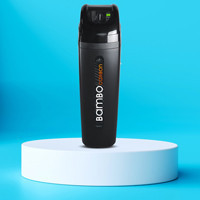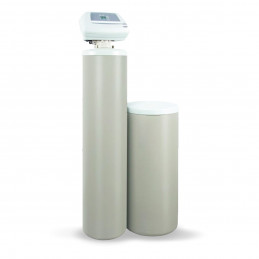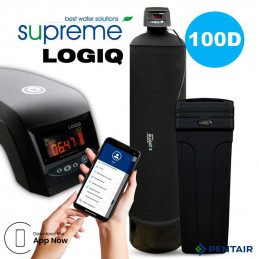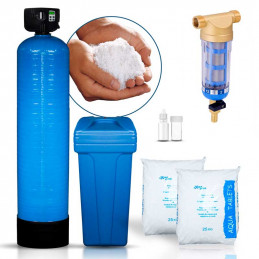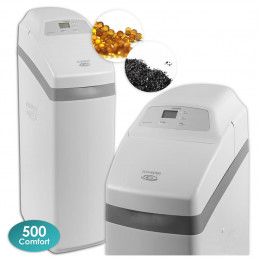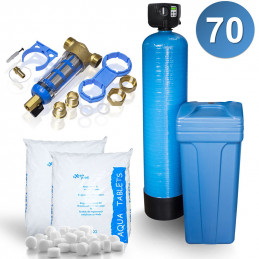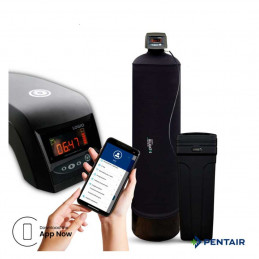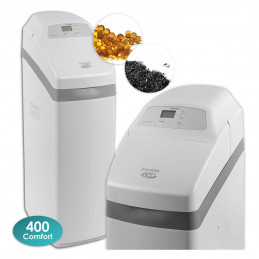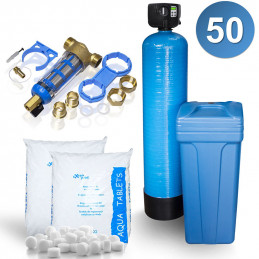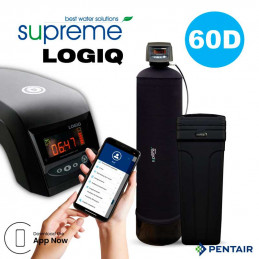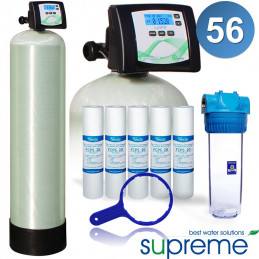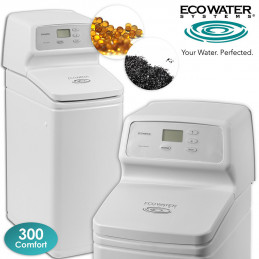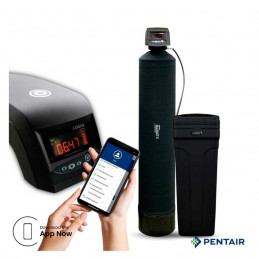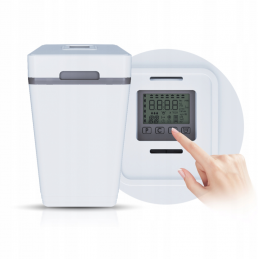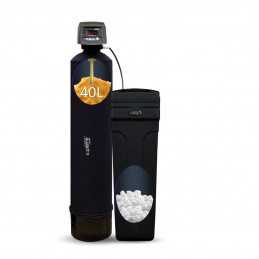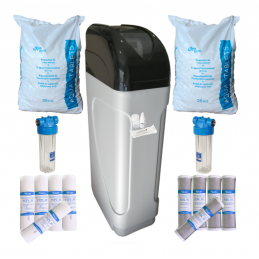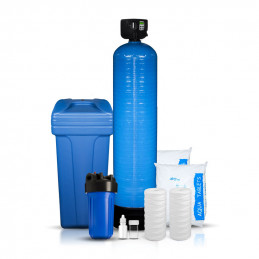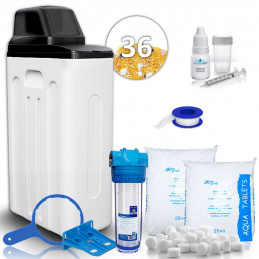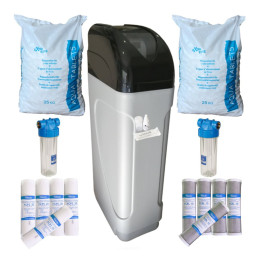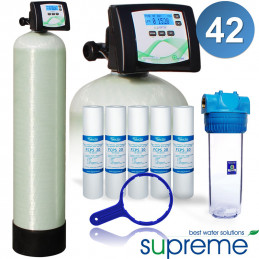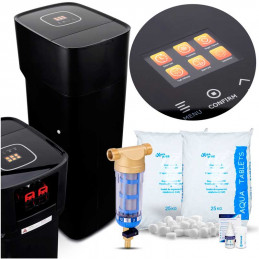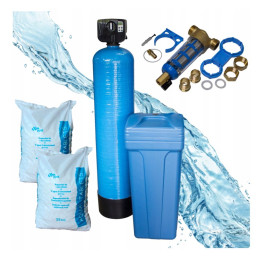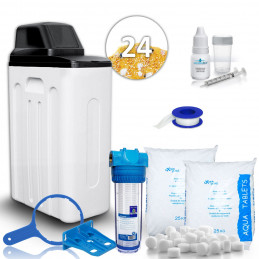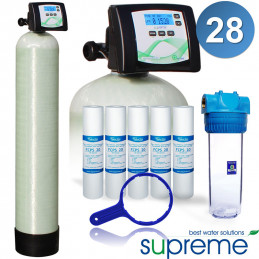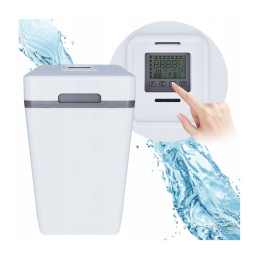- There are no more items in your cart
- Shipping
- Total zł0.00
- Bestsellers
- Hurt
- Water filters
- Whole house filters
- Kitchen filters
- Bathroom filters
- Aquarium filters
- Reverse osmosis
- Water demineralizers
- Filter cartridges
- UV bactericidal lamps
- Alkaline water ionizers
- Industrial water filters
- Accessories, parts, and others
- Descaling filters for the coffee machine
- Water softeners and iron removers
- Water saturators
- ACES
- AMBERLITE
- AQUA VITA
- AQUAFILTER
- AQUAPHOR
- AQUATOR
- BASSAU
- BERG
- BIOCERA
- BIONIQ
- BLUEFILTERS
- CHEMOFORM
- CINTROPUR
- DAFI
- DELONGHI
- DIAMOND
- DOM WODY
- ECOWATER
- FILMTEC
- FIT ALCO
- FITAQUA
- GREEN FILTER
- HANNA INSTRUMENTS
- HELIXPRO
- HELLO PURE
- HIDROTEK
- HM-DIGITAL
- HONEYWELL
- JAVEL
- KLARWOD
- KRUPS
- MIDEA
- OTOWODA
- OTTONE
- Palintest
- PENTAIR
- PHILIPS
- PLATINUM WASSER
- PUROLITE
- SIEMENS
- SUPREME
- TAB-SOL
- TOP FILTER
- UST-M
- USTM
- VONTRON
- WODARO
Porady
Zmiękczacze do wody
Co to jest zmiękczacz do wody?
Zmiękczacze pozwalają wymienić jony magnezu i wapnia, które są składnikami powodującymi twardość wody, na jony sodu. Dzięki nim możliwe jest usunięcie uciążliwych osadów z kamienia, mających negatywny wpływ na: kondycję skóry, włosów, a także wydajność urządzeń AGD (np. pralki) czy instalacji.
Filtruj
Price
Brand
What is a water softener?
The operation of a water softener is based on ion exchange. As mentioned in the introduction, hard water contains calcium (Ca²⁺) and magnesium (Mg²⁺) ions, which are responsible for water hardness. Softeners are equipped with ion exchange resin, often based on cationic resin, which allows liquid with a pH level greater than 7 to undergo the ion exchange process. Calcium and magnesium ions are removed, and sodium ions (Na⁺) are introduced in their place. As a result, the water becomes significantly softer, which prevents scale buildup in appliances and pipes.

Regeneration of the softener
Water softeners have a limited capacity for removing calcium and magnesium ions. As the ion exchange resin becomes saturated with them, regeneration is necessary. In this process, the resin is flushed with a solution of table salt (NaCl), which causes the release of calcium and magnesium ions and replaces them with sodium ions. The softener is then ready for the next cycle of water purification.

Types of ion exchange resins
An important aspect in the case of water softeners is the type of ion exchange resin used. Popular types include:
Cationic resin – is used to remove calcium and magnesium ions. Hard water flowing through the softener undergoes the ion exchange process, during which sodium ions are produced.
Anionic resin – is used in cases where it is necessary to remove anions, such as chloride or sulfate ions.
Mixed resin – is a combination of cationic and anionic resins, allowing for water treatment with various types of contaminants.

Types of water softeners – classification by construction
Water softeners can be classified in various ways. One of them is categorization based on construction.
Compact water softeners
Compact water softeners are a common choice for households and small businesses. Their popularity is due to their small size and ease of use. Compact softeners are self-contained units that do not require a separate tank for tablet salt or a pressure vessel with a filter medium. They are characterized by easy installation and maintenance, making them an attractive solution for those looking for a simple and effective way to treat water. Compact water softeners are mainly suitable for less demanding applications due to their limited capacity.
Two-part water softeners
Two-part water softeners consist of two separate units: a salt tank and a pressure vessel filled with filter medium and a control head. This type of softener is more advanced than compact units – the salt tank is usually larger and requires periodic salt replenishment, allowing it to handle a greater water flow.
Two-part water softeners are typically used in hotels, restaurants, or industrial facilities. With greater capacity and the ability for more advanced control, they provide a more versatile solution and can handle hard water reduction even under increased demand.
Types of water softeners – classification by regeneration process
Another way to classify water softeners is to distinguish them based on their regeneration capabilities.
Water softeners for manual regeneration
Water softeners for manual regeneration are the basic type of devices that require manual start and control by the user. After a certain period of use, the user must initiate the regeneration process themselves. Although this is a simple solution, it does require some attention and involvement.
Water softeners with time control
Water softeners with time control, also known as clock softeners, automatically initiate the regeneration process at set intervals. This is a convenient solution; however, it can lead to wasting salt and water if usage is irregular.
Water softeners with volumetric control
The most advanced water softeners utilize volumetric control. These devices monitor water usage and initiate the regeneration process only when it is actually necessary. This is the most efficient and economical solution, minimizing salt and water waste, contributing to significant savings.
Advantages of water softeners
Improvement of water quality and health
The main function of softeners is to improve the quality of water available in the home. Removing water hardness can have many benefits for its users and their health. Soft water prevents tartar buildup, which positively affects oral hygiene, and also increases comfort during bathing, reducing the risk of exacerbating issues such as atopic dermatitis, rashes, or acne.

Protection of household appliances
Water softeners protect household appliances, such as boilers, washing machines, and dishwashers, from corrosion and scale buildup. This extends the lifespan of appliances and makes them less prone to breakdowns.

Industrial efficiency
In many industries, water softeners provide clean water necessary for production. Reducing water hardness protects equipment from malfunctions and ensures consistent efficiency in production processes.
Energy savings
Water softeners contribute to energy savings by increasing the efficiency of household appliances. For example, boilers and heat exchangers operate much more efficiently in the presence of soft water.
Savings on cleaning agents
```Soft water requires smaller amounts of detergents, soaps, and cleaning agents. This leads to a reduction in costs associated with maintaining cleanliness. Water softeners are therefore an investment that relieves the household budget in the long term.
Reduction of waste
By eliminating water hardness, softeners contribute to reducing waste such as deposits on sanitary devices and household appliances.
Water softeners – summary
Water softeners are a key technology in water treatment processes. They can remove stubborn limescale deposits that negatively affect skin health, hair condition, and the longevity and efficiency of household appliances and installations. In the store MojaWoda.com, you will find many softeners for various applications.




